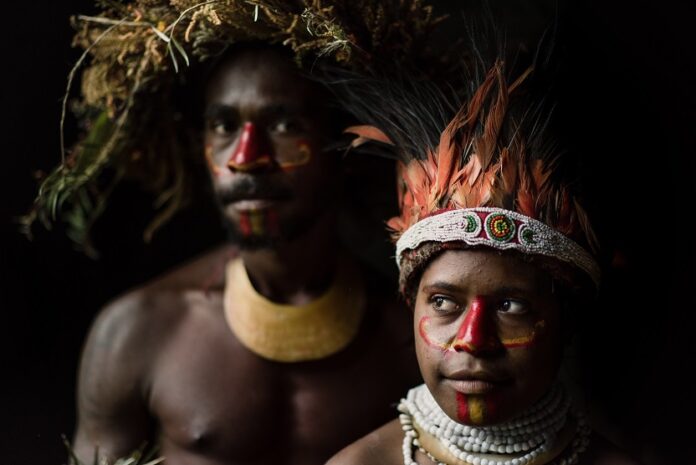Hunter gatherers are often thought of as dumb animalistic folks who lived short, miserable lives. In terms of societal advancements such as technology, hunter gatherer societies were inferior to modern civilized pantao societies. However, this simplistic perspective prevents individuals gaining insight into 90%1 ng ating ebolusyon bilang mga mangangaso, at ang pananaw na iyon ay maaaring mag-alok sa atin ng mga aralin kung paano i-maximize ang ating kalidad ng buhay sa pamamagitan ng pagtutustos sa ating kalikasan at tungkol sa kung paano tayo umunlad.
It is well known that hunter gatherers had significantly shorter average life expectancy than contemporary tao, the average hunter gatherer lifespan being somewhere between 21 and 37 2 compared to the global life expectancy of tao today which is 70 plus3. Gayunpaman, kapag ang karahasan, pagkamatay ng bata at iba pang mga kadahilanan ay kontrolado na, ang average na haba ng buhay ng mangangaso sa kapanganakan ay magiging 702 which is almost the same as of contemporary tao.
Mangangalap ng mga mangangaso that exist today are also vastly healthier than civilizational tao. Non-communicable diseases (NCDs) such as diabetes, heart disease, cancer and Alzheimer’s disease are very uncommon amongst hunter gatherers – less than 10% 4 higit sa 60s sa isang populasyon ay may mga NCD, kumpara sa mga modernong populasyon sa lunsod kung saan humigit-kumulang 15% 5 of 60 to 79 year olds have heart disease alone (only one of the many possibilities of NCD). The average hunter gatherer is also far fitter than the average urban pantao, as the average hunter gatherer has approximately 100 minutes per day of moderate to high intensity exercise 4, kumpara sa 17 minuto ng modernong American adult 7. Ang kanilang mean body fat ay nasa 26% din para sa mga babae at 14% para sa mga lalaki 4, kumpara sa karaniwang taba ng katawan ng nasa hustong gulang na Amerikano na 40% para sa mga babae at 28% para sa mga lalaki 8.
Higit pa rito, kapag ang Panahon ng Neolitiko nagsimula (ito ay karaniwang bumubuo ng isang paglipat mula sa pangangaso at pagtitipon tungo sa pagsasaka), kalusugan of tao as individuals declined 6. Ang pagtaas ng mga sakit sa ngipin, mga nakakahawang sakit, at mga kakulangan sa nutrisyon ay nangyari 6 sa pagsisimula ng Neolithic revolution. Mayroon ding trend ng pagpapababa ng taas ng nasa hustong gulang na may patuloy na diyeta na nakabatay sa agrikultura 6. Ang pagbabawas ng pagkakaiba-iba ng mga pagkain sa diyeta ay malamang na isang malaking aspeto nito. Kabalintunaan, ang mga mangangaso ay talagang nakakakuha din ng kanilang kabuhayan sa mas kaunting oras kaysa sa mga agriculturalist, ibig sabihin, ang mga mangangaso ay may mas maraming oras sa paglilibang 9. Ang mas nakakagulat, talagang mas kaunti ang taggutom sa mga mangangaso kaysa sa mga agriculturists 10.
Ang mga Hunter gatherer society ay mas egalitarian din kaysa sa farming-dependent society 11 because less resources were accumulated and therefore individuals could not gain power over other individuals, as they were all necessary parts to the collective. Therefore, it seems that resource accumulation leading to large population explosion was the primary factor for pantao innovation since onset of agrikultura, and that it is likely that the kalusugan of individuals was compromised as a result. Although, clearly many of these innovations such as medicine can improve pantao health, however, many causes of mental and physical health deterioration are due to our divergence from our hunter gatherer roots.
***
Sanggunian:
- Daly R., …. Ang Cambridge Encyclopedia of Hunters and Gatherers. Cambridge University Press. Available online sa https://books.google.co.uk/books?id=5eEASHGLg3MC&pg=PP2&redir_esc=y&hl=en#v=onepage&q&f=false
- McCauley B., 2018. Life Expectancy sa Hunter-Gatherers. Encyclopedia of Evolutionary Psychological Science. Unang Online: 30 Nobyembre 2018. DOI: https://doi.org/10.1007/978-3-319-16999-6_2352-1 Magagamit na online sa https://link.springer.com/referenceworkentry/10.1007%2F978-3-319-16999-6_2352-1#:~:text=in%20their%20grandchildren.-,Conclusion,individuals%20living%20in%20developed%20countries.
- Max Roser, Esteban Ortiz-Ospina at Hannah Ritchie (2013) – “Life Expectancy”. Nai-publish online sa OurWorldInData.org. Nakuha mula sa: 'https://ourworldindata.org/life-expectancy' [Online Resource] https://ourworldindata.org/life-expectancy
- Pontzer H., Wood BM at Raichlen DA 2018. Hunter‐gatherers bilang mga modelo sa pampublikong kalusugan. Mga Review sa Obesity. Volume 19, Isyu S1. Unang nai-publish: 03 Disyembre 2018. DOI: https://doi.org/10.1111/obr.12785 Magagamit na online sa https://onlinelibrary.wiley.com/doi/full/10.1111/obr.12785
- Mozaffarian D et al. 2015. Mga Istatistika ng Sakit sa Puso at Stroke—2015 Update. Sirkulasyon. 2015;131: e29-e322. Available online sa https://www.heart.org/idc/groups/heart-public/@wcm/@sop/@smd/documents/downloadable/ucm_449846.pdf
- Mummert A, Esche E, Robinson J, Armelagos GJ. Tangkad at katatagan sa panahon ng paglipat ng agrikultura: ebidensya mula sa talaang bioarchaeological. Econ Hum Biol. 2011;9(3):284-301. DOI: https://doi.org/10.1016/j.ehb.2011.03.004 Magagamit na online sa https://pubmed.ncbi.nlm.nih.gov/21507735/
- Romero M., 2012. Gaano Talaga Nag-eehersisyo ang mga Amerikano? Washingtonian. Na-publish noong Mayo 10, 2012. Magagamit online sa https://www.washingtonian.com/2012/05/10/how-much-do-americans-really-exercise/#:~:text=The%20CDC%20says%20adults%2018,half%20times%20less%20than%20teenagers.
- Marie-Pierre St-Onge 2010. Masyado bang Mataba ang Mga Normal na Timbang na Amerikano? Obesity (Silver Spring). 2010 Nob; 18(11): DOI: https://doi.org/10.1038/oby.2010.103 Magagamit na online sa https://www.ncbi.nlm.nih.gov/pmc/articles/PMC3837418/#:~:text=Average%20American%20men%20and%20women,particularly%20in%20lower%20BMI%20categories.
- Dyble, M., Thorley, J., Page, AE et al. Ang pakikibahagi sa gawaing pang-agrikultura ay nauugnay sa pagbawas ng oras ng paglilibang sa mga mangangaso-gatherer ng Agta. Nat Hum Behav 3, 792–796 (2019). https://doi.org/10.1038/s41562-019-0614-6 Available online sa https://www.nature.com/articles/s41562-019-0614-6
- Berbesque JC, Marlowe FW, Shaw P, Thompson P. Ang mga Hunter-gatherers ay may mas kaunting taggutom kaysa sa mga agriculturalist. Si Biol Lett. 2014;10(1):20130853. Na-publish 2014 Ene 8. DOI: https://doi.org/10.1098/rsbl.2013.0853 Magagamit na online sa https://www.ncbi.nlm.nih.gov/pmc/articles/PMC3917328/
- Gray P., 2011. Paano Napanatili ng Hunter-Gatherers ang Kanilang Egalitarian na Paraan. Sikolohiya Ngayon. Nai-post noong Mayo 16, 2011. Magagamit online sa https://www.psychologytoday.com/gb/blog/freedom-learn/201105/how-hunter-gatherers-maintained-their-egalitarian-ways
***






































